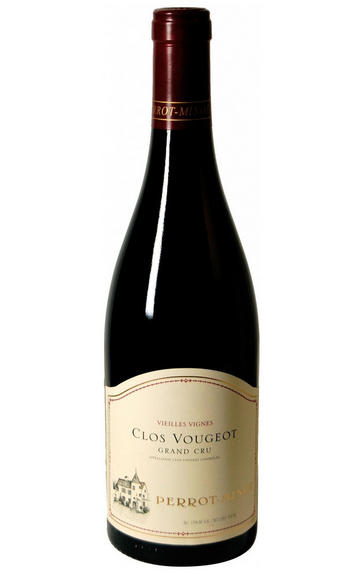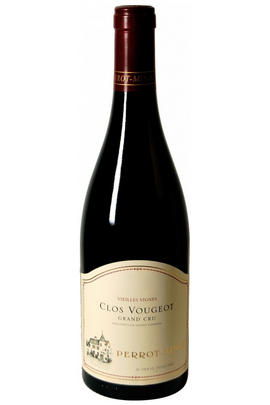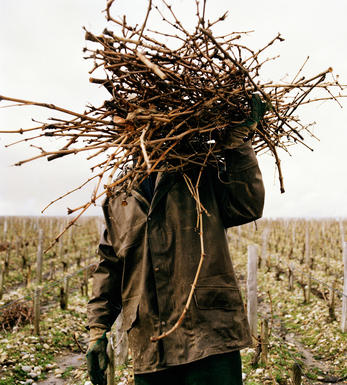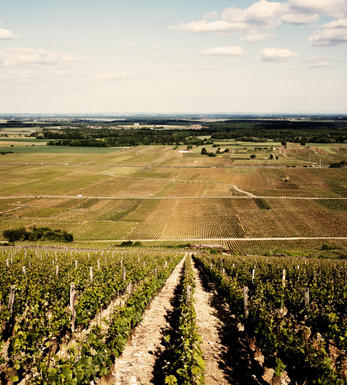
2012 Clos Vougeot, Vieilles Vignes, Domaine Perrot-Minot

Critics reviews
Allen Meadows, burghound.com, Jan 2014
About this WINE

Domaine Perrot-Minot
Christophe Perrot-Minot took over from his father Henri in 1993. Part of the estate stems from the acquisition of Domaine Pernin-Rossin in 2000 while the remainder comes down from maternal grandfather Merme, which explains the similarity of holdings to Domaine Taupenot-Merme over the road. In addition to the domaine wines listed below, various other vineyards, most notably the various grands crus of Gevrey-Chambertin, are made from purchased grapes under the same label but without the word ‘domaine’.
The winemaking begins with exceptionally vigorous sorting of the grapes, first in the vineyard and then on two tables de tri. The grapes are destemmed before one week of cool pre-maceration, followed by fermentation with pumping over preferred to punching down, especially for the more fine-boned appellations such as Chambolle-Musigny. Maturation takes place over 12 to 14 months without racking, in barrels from the Tronçais and Allier forests supplied by tonnellerie Rémond, with 25 per cent new wood for village wines, 40 per cent for premiers crus and 50 per cent for the grands crus.
Two of the premiers crus, Chambolle-Musigny Combe d’Orveau and Nuits-St-Georges La Richemone come in regular vieilles vignes and ‘ultra’ versions from exceptionally ancient vines.
Jasper Morris MW, Burgundy Wine Director and author of the award-winning Inside Burgundy comprehensive handbook.

Vougeot
Most of the wine produced in this small village comes from a single, walled Grand Cru vineyard, the famous Clos de Vougeot. The vineyard in its present form dates from 1336 (when it was first planted by monks of Cîteaux), although it was not until the following century that it was entirely enclosed by stone walls.
Clos de Vougeot is both the smallest commune and the largest Clos in the Cote d’Or. It consists of 50 hectares of vineyards shared among 82 owners, with six soil types. There is quite a difference in quality between the upper (best) and lower (least fine) parts of the vineyard, though in medieval times a blend from all sectors was considered optimum.Le Domaine de la Vougeraie makes a very fine white wine from Le Clos Blanc de Vougeot, first picked out by the monks of Cîteaux as being suitable ground for white grapes in the year 1110.
- Five hectares of village Vougeot
- 12 hectares of Premier Cru vineyards (four in all): Les Cras, Les Petits-Vougeots, Clos de la Perrière and Clos Blanc de Vougeot
- 51 hectares of Grand Cru vineyard – Clos de Vougeot
- Recommended producers: Domaine de la Vougeraie, Domaine Bertagna, Engel, Anne Gros, Grivot, Liger-Belair, Meo-Camuzet.

Pinot Noir
Pinot Noir is probably the most frustrating, and at times infuriating, wine grape in the world. However when it is successful, it can produce some of the most sublime wines known to man. This thin-skinned grape which grows in small, tight bunches performs well on well-drained, deepish limestone based subsoils as are found on Burgundy's Côte d'Or.
Pinot Noir is more susceptible than other varieties to over cropping - concentration and varietal character disappear rapidly if yields are excessive and yields as little as 25hl/ha are the norm for some climats of the Côte d`Or.
Because of the thinness of the skins, Pinot Noir wines are lighter in colour, body and tannins. However the best wines have grip, complexity and an intensity of fruit seldom found in wine from other grapes. Young Pinot Noir can smell almost sweet, redolent with freshly crushed raspberries, cherries and redcurrants. When mature, the best wines develop a sensuous, silky mouth feel with the fruit flavours deepening and gamey "sous-bois" nuances emerging.
The best examples are still found in Burgundy, although Pinot Noir`s key role in Champagne should not be forgotten. It is grown throughout the world with notable success in the Carneros and Russian River Valley districts of California, and the Martinborough and Central Otago regions of New Zealand.


Buying options
Add to wishlist
Description
A brooding and distinctly earthy nose only grudgingly liberates aromas of various dark berries, sandalwood and soft spice notes. There is exceptionally good richness and volume to the attractively ripe and vibrant big-bodied flavors that are at once powerful and serious on the impressively persistent finish that is a bit less youthfully austere than usual. Drink 2018-2028
Allen Meadows, burghound.com, Jan 2014
wine at a glance
Delivery and quality guarantee